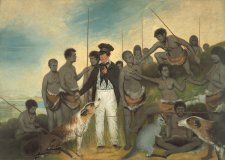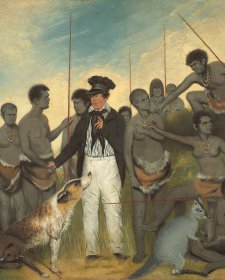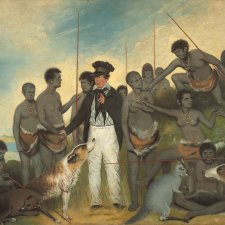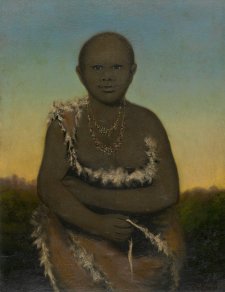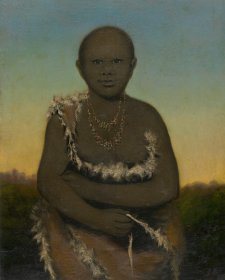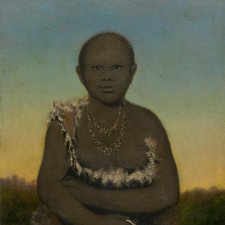Hostilities between colonisers and lutruwita’s (Tasmania’s) First Nations in the late 1820s led to a policy for the removal of Aboriginal people to Wybalenna, a mission station on Flinders Island in Bass Strait. An evangelically-inclined settler named George Augustus Robinson was appointed to bring this policy into effect. Between 1830 and 1835 he conducted a series of expeditions around lutruwita by which Palawa people were persuaded into banishment. The Palawa leaders who acted as Robinson's guides – including Trukanini (c. 1812–1876) and Wurati (d. 1842) – became popular portrait subjects, with artist Benjamin Duterrau making his name with portraits of them and their compatriots. Duterrau's works were valued by colonists as 'correct' records evidencing Robinson's supposed success in 'civilising' Palawa people. Yet what they reveal is that their subjects remained fiercely proud of their traditions and identity, even after removal to Wybalenna. Wurati, for example, refused to adopt European diet or dress and maintained practices such as the use of ochre for his hair and beard; and Trukanini's portrait shows her wearing shell necklaces – the making of which remains a powerful cultural tradition for contemporary Palawa artists.
Purchased with funds provided by The Ian Potter Foundation 2009
The National Portrait Gallery respects the artistic and intellectual property rights of others. Works of art from the collection are reproduced as per the
Australian Copyright Act 1968 (Cth). The use of images of works from the collection may be restricted under the Act. Requests for a reproduction of a work of art can be made through a
Reproduction request. For further information please contact
NPG Copyright.
![Fit to screen: Woureddy [Wurati], a wild native of Brune Island Woureddy [Wurati], a wild native of Brune Island](/files/8/9/0/b/i8536-wd.jpg)
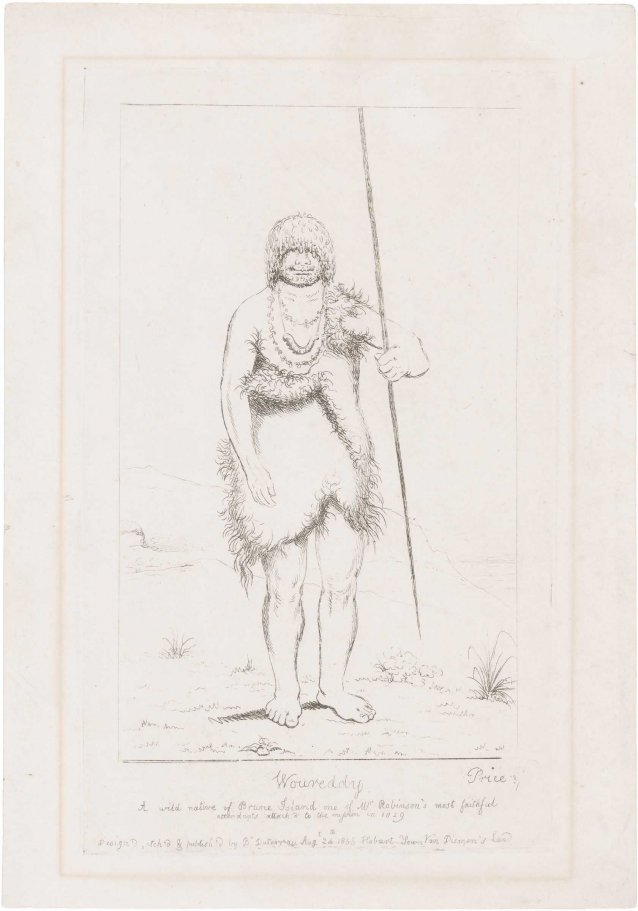
![Woureddy [Wurati], an Aboriginal Chief of Van Diemen's Land Woureddy [Wurati], an Aboriginal Chief of Van Diemen's Land](/files/1/8/b/4/i10111-th.jpg)
![Truggernana [Trukanini], a native of southern part of V.D. Land Truggernana [Trukanini], a native of southern part of V.D. Land](/files/1/8/5/e/i8535-th.jpg)



